Springtails are tiny insects that have no wings but can jump very high. These bugs aren’t dangerous to people or pets but do often seek out damp places and tend to be found in large groups. Though these bugs won’t bite, it’s still unpleasant to find any in or around your home.
How to get rid of springtails? To get rid of springtails, be sure to clean any areas of your home that are exposed to dampness, such as the bathroom or kitchen. Use a vinegar and water solution in a spray bottle to clean, and spray any bugs you come across. Keeping your home dry will help to prevent springtails from moving in.

This article will explore how to identify springtails, along with whether or not they’re dangerous and how you can get rid of them. Lastly, I’ll cover some of the best chemicals to use to prevent them from making your home their own.
Springtail Identification
Before you can look into removing springtails from your home, it’s important to identify them first. If they turn out to be another kind of bug, other methods may be used to help eradicate them from your house.
What Are Springtails?
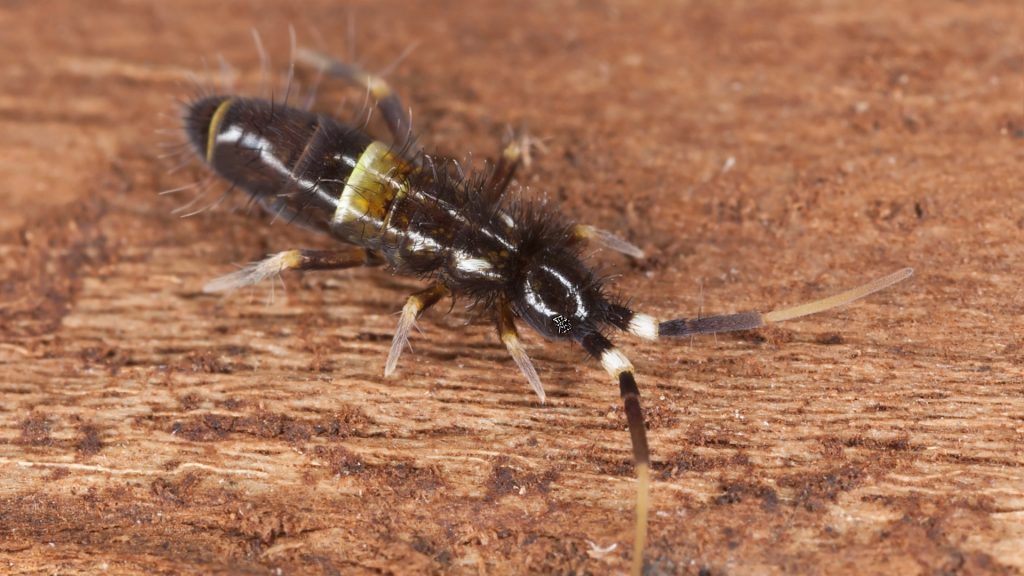
Springtails are tiny bugs that leap like fleas when you disturb them, which is why they’re often mistaken for this, more common, household pest.
Their name comes from the limbs underneath the abdomen. When threatened, they have a small spike, known as a furcula, which is quickly released – causing the bug to launch into the air. This behavior can be very startling for many people.
What Do Springtails Look Like?
The springtail is very tiny and usually black or brown. They are soft-bodied, have six legs and no wings.
The furcular is their most distinctive feature since it is the appendage they use to fling themselves into the air.
Where Do Springtails Come From?
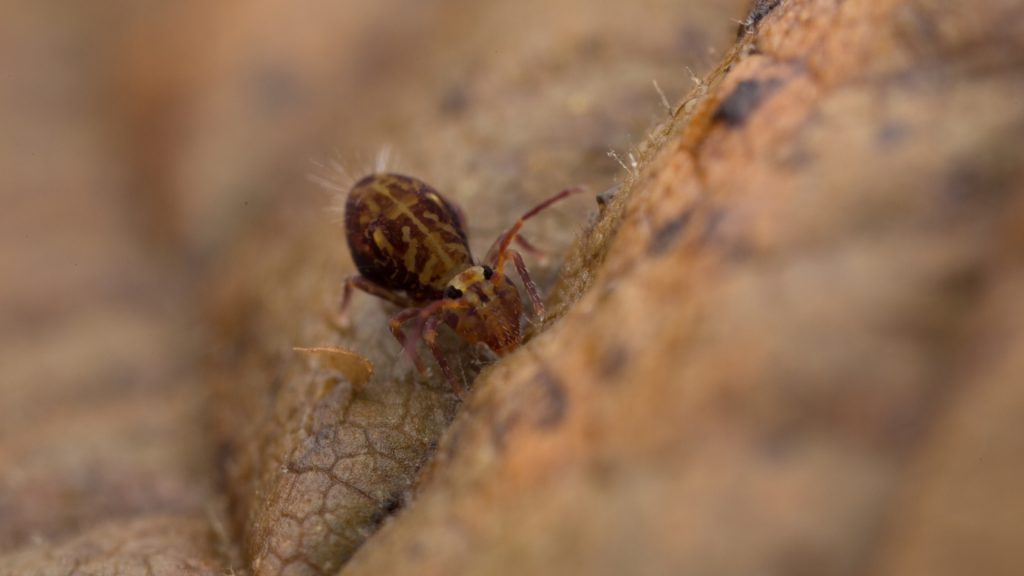
In the outdoors, you will find springtails under leaves, soil, bark, or stones. Like many bugs, they enjoy moisture and will make their home in dark, damp areas. They even make their homes in ant and termite nests.
If your yard is wet, the moisture might attract such insects, so it’s best to take measures to help deter this, which we’ll cover later on.
Springtail Life Cycle
There are three primary stages in the springtail life cycle:
- The egg
- Nymph stage
- The adult
Females will lay eggs, which then hatch in about three weeks, and the nymphs will molt about six or seven times as they turn into adults.
Nymphs look the same as the adult springtails – only smaller – and matured springtails will only live for a few weeks. They typically seek out a food source and lay eggs during that time- starting the life cycle over again.
Do Springtails Jump?
When learning how to stop springtails, it is essential to know that they can jump pretty high.
Though wingless, they can jump thanks to the small spike on their abdomen – their furcula – located at the back end of their body. This is deployed when they feel threatened.
What Do Springtails Eat?
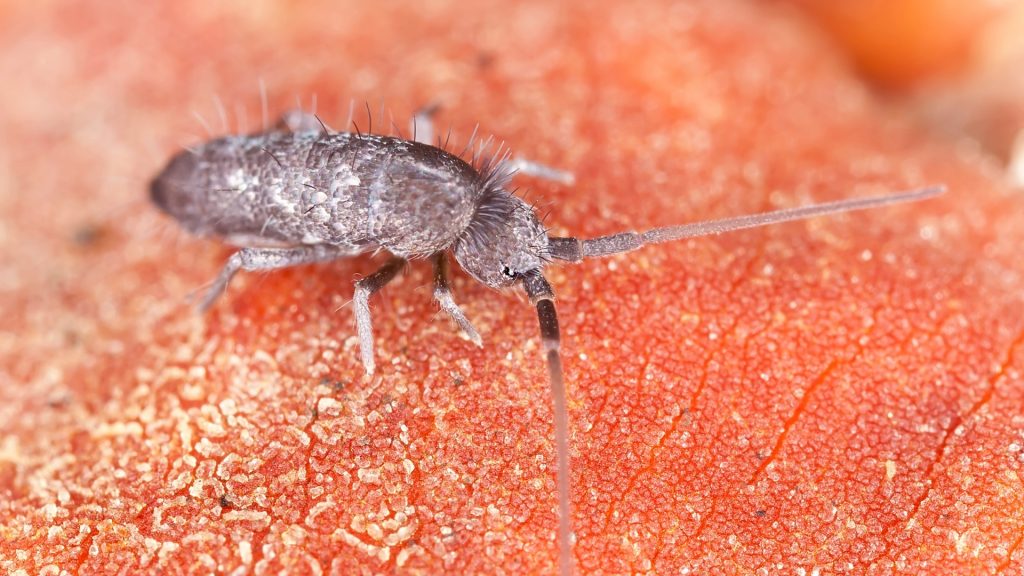
Most springtails are recyclers and provide the soil with many nutrients. However, some species are carnivorous and will eat other springtails.
- Fungi
- Bacteria
- Algae
- Lichens
- Decaying organic matter
The soft bugs need to be in a moist environment to live, as moisture leaves their body very quickly.
Types of Springtails
There are four main types of springtails:
- Atmobiotic
- Hemiedaphic
- Euedaphic
- Edaphic
Of these four main types, it is believed that there are around 3,600 species around the world.
Are Springtails Harmful?
Overall, springtails are not harmful. They won’t hurt people, pets, or even establish growing plants.
Unlike some other pests, such as termites and bees, they can’t damage your home. Still, a springtail infestation would be a significant nuisance.
Are Springtails Bad for Plants?
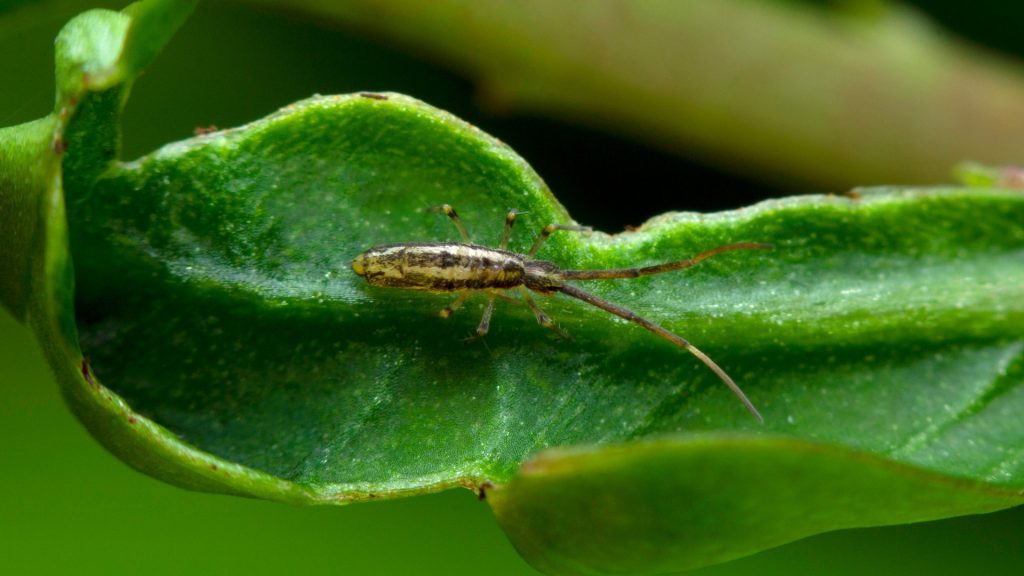
Springtails are not usually bad for plants, but they may chew around the roots, causing plant hardiness to lower.
The good news is that they will not eat live plants. Springtails go for decaying plants, typically ignoring the green ones.
Can Springtails Infest Humans?
No, springtails can not infest humans. There is a common misconception that they can infest skin, although many doctors deny that this is possible. These insects can cause a reaction in some people, however.
They may make you feel itchy by causing dermatitis, although they don’t bite and can’t transmit human diseases.
What Causes Springtails?
Springtails will usually come inside when the weather outside is dry. Since they specifically seek out moisture, they are more likely to invade if your home is damp, for example, after a pipe has burst and the area hasn’t fully dried out.
How Do Springtails Get in the House?
Springtails can enter your home through small cracks and usually gravitate to your home when the weather is particularly dry.
Being so small, they can quickly get inside through small holes, vents, crawl spaces, or even under the cracks of doors.
How To Get Rid of Springtail Bugs? Step by Step Instructions

Need to know how to kill springtails? It’s simple – you can remove these bugs by cleaning.
To get rid of springtail bugs:
1. Start by mixing vinegar and water in a spray bottle.
2. Spray the bugs with vinegar which will penetrate their soft bodies.
3. Cover the infected area with vinegar.
4. Use a cleaning rag to move the liquid around.
5. Spray and wipe daily until you’re sure there are no survivors.
6. Vacuum up any springtails you see, empty the vacuum, and take the garbage out right away.
Once you’ve eradicated the springtail problem, it’s vital to ensure the area remains clean and – more importantly – dry so they won’t come back.
This video covers a simple four-step process to removing springtails:
Get Rid of Springtails in Specific Places
Unfortunately, these tiny insects can be found anywhere there may be dampness. That could include the basement, garden, or kitchen area.
Below, we’ll cover how to handle an infestation in a variety of areas.
How To Get Rid of Springtail Bugs in Your House?
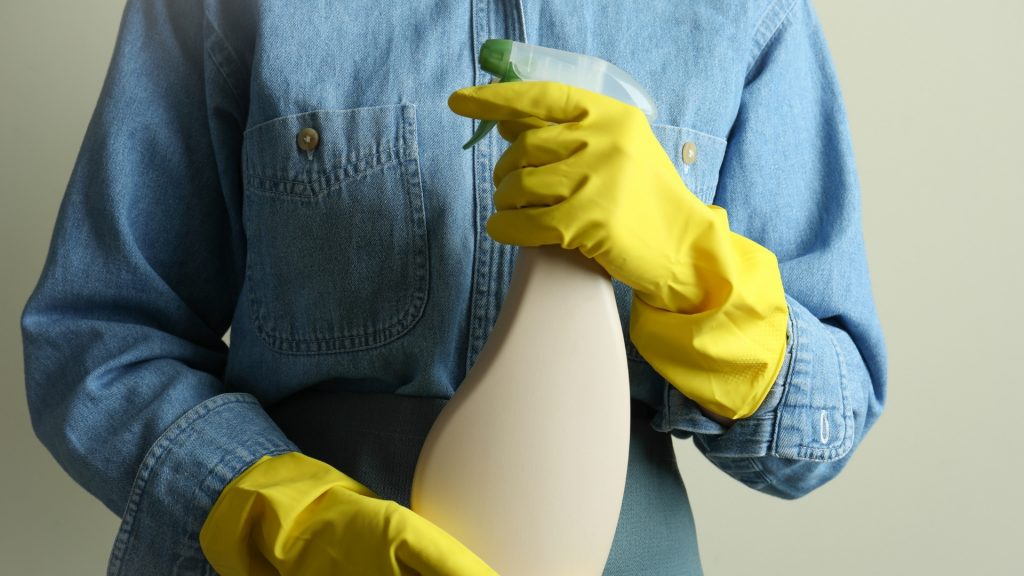
Getting rid of springtails requires that you clean very often until you have removed them. The best natural method is to use vinegar. However, you can also use more powerful chemical sprays around the home.
How To Get Rid of Springtails in Skin?
Although it might feel like it, springtails can’t get into your skin. In addition, they do not bite. If you feel itchy or see any red spots, it’s more likely a dermatitis rash, which you can treat with aloe vera or ice packs to the area.
Cedar oil is often used to kill various parasites on contact. So, if you notice a couple of bugs on your skin, try rubbing cedar oil over the area.
How To Get Rid of Springtails in Soil?
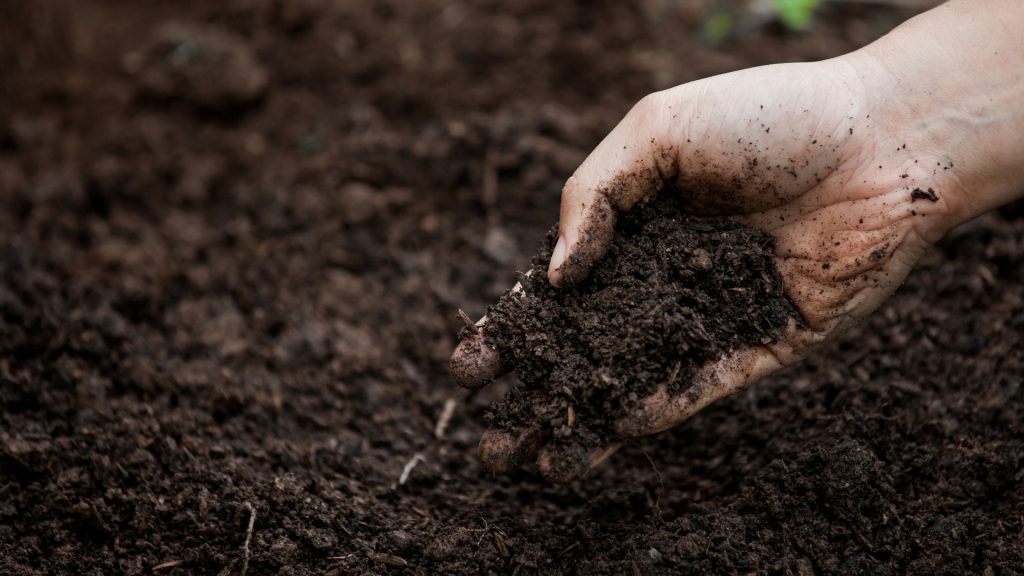
Since plant beds and gardens are usually quite damp, it’s not uncommon to find a number of pests in the area.
To get rid of springtails in soil, allow the soil to dry out as much as possible. Springtails usually only go for decaying plants, so drying out the area shouldn’t be an issue.
However, if you have potted plants inside that are infected, place the pot in direct sunlight to speed up the drying process. You can also sprinkle diatomaceous earth into the soil to remove the bugs.
How To Get Rid of Springtails in Your Basement?
Springtails are most likely to invade your basement, as this is usually the dampest place in the home.
As laid out above, use vinegar on the springtails over several days. Thoroughly clean the area and wipe with vinegar until the problem is solved. You may also want to consider using chemicals if the infestation is bad enough.
How To Get Rid of Springtails on Your Window Sill?

Windows are often prone to condensation, especially if it’s hot outside and you’re running air conditioning to keep the house cool. In older homes especially, when the window seal isn’t airtight, this can lead to dampness on the window sill.
To get rid of springtails on your window sill, start by drying the area as much as possible. Then, you will want to sprinkle the sill with diatomaceous earth.
This substance should deter new insects that would otherwise enter your home through the window.
How To Get Rid of Springtails in Your Bathroom?
In another very commonly damp area, your bathroom is subjected to lots of water and steam, and if you don’t have proper ventilation, there’s often nowhere for that moisture to go.
You will need to start by fixing any leaky pipes in the bathroom – repair drips, leaks, and other issues to remove the moisture. Then, set up a dehumidifier in the room.
- 4,500 sq ft Large Dehumidifier: Our 15.4 x 11 x 24.3 inches...
- Designed For Modern Home: That most dehumidifiers are clunky...
- Super Easy To Use: Dehumidifiers don’t need to be complicated,...
- Eliminates Moisture Effectively: Our portable dehumidifier...
- Important Things To Know: Dehumidifiers emit heat when in use...
This should dry the area out completely, though it may take a few days. Be sure to shut the door during this time and try not to run the hot water to create more steam. Once dry, clean with vinegar and chemicals.
How To Get Rid of Springtails in Your Pool?

Needless to say, your pool area will be a prime piece of real estate for any bug that’s drawn to dampness. Be it the filter or the chemical storage area, chances are, there are plenty of hiding spots for springtails.
Skimming your pool often is an excellent place to start. However, you will want to do a little more here and there. Turn off your pool lights and use cleaners in the pool. Also, make sure you remove wet debris from inside and around the pool as often as possible and don’t leave wet towels lying around.
How To Get Rid of Springtails in Your Yard?
Between sprinkler systems and planted areas, there are a lot of hiding places for springtails.
First, check your yard for drainage problems. If the grass is constantly soggy, it will attract far more than just tiny insects. Then, remove leaf piles and other debris from around your property. Make sure to keep straw and firewood at least a foot away from your house.
How To Get Springtails Out of Your Hair?

Much like springtails in the skin, they will not infest your hair. Springtails are attracted to dampness and mold, so unless you have severe problems with this in your hair, you should have nothing to worry about.
If you came across an infestation – startling them and causing them to jump – it is possible that a few bugs made their way into your hair. Though they will not nest, that is obviously unpleasant.
A shower with hot water and a lot of shampoo will get rid of any insects that may have made their way into your hair.
How To Get Rid of Springtails in a Kitchen Sink?
Most kitchen sink areas get wet and stay wet throughout the day. If you have an older sink, the chances are that dampness will eventually attract pests and insects., especially if that area is under an older, wooden window.
To get rid of springtails in a kitchen sink:
1. Clean the area carefully with bleach to remove the bugs.
2. Run the water on hot to ensure any lingering pests go down the drain.
3. Finish by spraying the area with vinegar.
Springtails in the bathroom sink are also common, but luckily you can also remove them with soap and water.
What Chemical Kills Springtails?
If the infestation is large enough, vinegar may not be enough to kill springtails – at least, not quickly.
When it comes to insecticides, you will want to use pyrethrin-based products, which are often found in bug “bombs.”
Best Springtail Insecticide
I recommend that you use the Bayer Delta Dust Pest Control Insecticide. The product can kill a wide variety of insects, including the springtail.
- Delta Dust Bed Bug Insecticide - 1 lb.
- Yield: 1 lb. of Delta Dust covers about 2,000 sq.ft.
- Target Pest: Ants, Bed Bugs, Boxelder Bugs, Cockroaches,...
- Active Ingredient: Deltamethrin, 0.05%
- Cannot ship to NY or CT.
It comes in a glue-like container with a simple nozzle and can cover as much as 2,000 square feet (185.81 meters squared).
Best Springtail Bug Spray
If you’re looking for something that can be used from further away, the BASF PT Cy-Kick Pressurized Spray is a great choice. It works well on several different types of insects as well and can be sprayed both indoors and outdoors.
- Cyfluthrin 0.1%
- Cy-Kick Aerosol Residual is for use in and around Apartments,...
- Cy-Kick Aerosol Residual kills and controls Ants Bed Bugs...
This spray is low-odor, making it perfect for smaller spaces, and has a straw for use in small cracks and hard-to-reach areas.
Best Springtail Repellents
Simple white vinegar or bleach is more than enough to repel springtails. They hate the smell of it, meaning if you spray areas of concern preemptively, it should be enough to prevent them from moving in.
- LUCY’S NATURAL COMPOSITION - Lucy’s White Vinegar's...
- SPICING UP DIPPING SAUCES - Lucy’s White Vinegar can add a...
- SUBSTITUTE FOR SALT OR BUTTERMILK - Lucy’s White Vinegar can be...
- ALL-PURPOSE CLEANER - Lucy’s White Vinegar is a powerful,...
- 100% FAMILY OWNED, FOUNDED AND OPERATED - Lucy’s was...
No products found.
Plus, the liquid burns their skin, killing them quickly and effectively.
Diatomaceous earth, such as this Bonide – Diatomaceous Earth, is another excellent repellent that can be safely used around kids and pets to kill a number of different insects.
- WIDE VARIETY OF INSECTS - Powerful insecticide that kills ant...
- INDOOR/OUTDOOR PESTICIDE - Full strength indoor and outdoor pest...
- QUICK RESULTS - Insects that come in contact with or ingest...
- CROP AND LIVESTOCK SAFE - Product can be applied over the top...
- APPLICATION METHODS - Apply the product directly as a dust or mix...
How To Get Rid of Springtails Naturally?
If you would prefer not to use chemicals to get rid of springtails, there is only one option that will be effective to remove the bugs and prevent them from coming back.
Best Home Remedies for Springtails
When it comes to a home remedy, we recommend you use white vinegar. It repels the bugs and kills them when they make contact with it.
White vinegar is considered a natural bug killer, though in some cases, you will need to dilute it before use. Be sure to read the label and use it in a well-ventilated area. If the site has no windows, wear a mask and place fans in the room.
How To Keep Springtails Away?
To keep springtails away, you will need to keep your home dry year-round. This means ensuring your windows and door seals are airtight and that you run some kind of quality dehumidifier if you live in a humid climate.
Always remove wet debris from around your home, such as fallen leaves and wet towels, and seal any small cracks that may appear in the wood or brick.
Summary
In short, springtail control requires deep cleaning. If you clean often with a simple vinegar solution, the bugs should go away.
However, it is just as essential to keep your home as dry as possible. By doing so, you ensure the bugs aren’t going to infest your house.
List of Sources
Merchant, M., Muegge, M. (2019). Springtails. Texas A&M AgriLife Extension Service.
Mueller, A., Hadi, B. (2016). Collembola. Bugwoodwiki.
Perry, E. (2007). Pests in Gardens and Landscapes: Springtails. Agriculture and Natural Resources, University of California.
Hahn, J. (2018). Springtails. University of Minnesota Extension.
- How to Get Rid of Copperheads | Practical Guide - August 27, 2023
- How to Get Rid of Corn Snakes | What Makes Them Aggressive? - August 27, 2023
- How to Get Rid of Alligators | Safety Measures and Removal Methods - July 16, 2023





